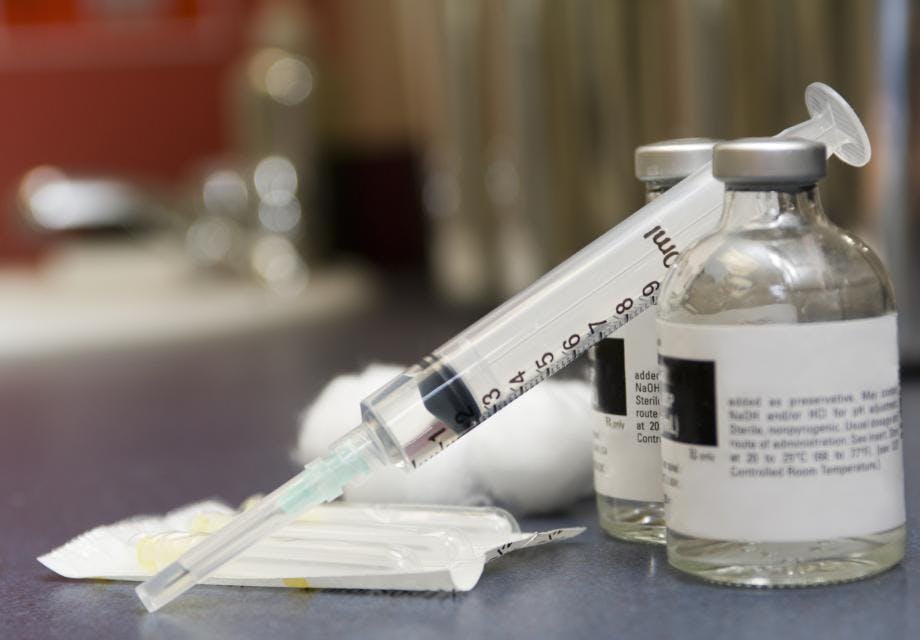Long-acting injectable PrEP: is it a game changer for HIV prevention?
Oliver Meth
03 August 2022
There are some new developments for PrEP that might change the way you take it in the future
New World Health Organisation (WHO) guidelines are calling for countries to consider the use of long-acting injectable cabotegravir (CAB-LA) as a safe and highly effective HIV prevention option for people at substantial risk of HIV infection.
PrEP is highly effective at preventing HIV infection, and right now, it comes in a pill form you can take daily, on demand, or periodically, depending on your circumstances and preferences.
Cabotegravir long-acting (LA) is an injectable form of PrEP that is given every two months by trained healthcare workers. The long-acting injectable, which was approved by the US Food and Drug Administration (FDA) in December 2021, is the first and only injectable PrEP option available.
What is long-acting injectable PrEP?
Long-acting injectable PrEP is an HIV prevention medication that is injected (instead of taken as a pill). Each injection remains effective for a longer time than PrEP as a pill reducing how often it needs to be taken.
How does long-acting injectable PrEP work?
There are a couple of options for long-acting PrEP, including injections and implants.
Cabotegravir is a new long-acting anti-retroviral that has been approved in some parts of the world for use as an HIV treatment, and most recently approved by the FDA for use as PrEP for HIV prevention.
Cabotegravir studies have been investigating the option of a health professional giving one injection into the glute muscle (your butt) every two months. The studies are incredibly promising: two of them finished early because the injections were so successful at preventing HIV. It’s likely cabotegravir will be the first long-acting injectable PrEP available.
There are other options also being investigated, but they are in very early stages of testing. Another drug called lenacapavir could be available as a subcutaneous (under the skin) injection, possibly only every six months.
A third option, islatravir, could be used as a prevention implant, effective for about a year. The implant is a small plastic rod that sits under the skin in your arm, using similar technology to contraception implants.
These are the options being investigated, but it’s likely that things might change as clinical trials progress. It’s still early days so there are a few unknowns, but already some advantages and disadvantages are clear.
What are the advantages of long-acting PrEP?
The biggest benefit of long-acting PrEP is just that: it’s long-acting. Many of these options mean one trip to the doctor every two months, six months, or even a year, and then you don’t have to think about taking PrEP in between.
If you’re the type of person that forgets to take your pills, then long-acting PrEP allows for more of a set-and-forget option (as long as you remember to get to the doctor for your next injection or implant!).
It also means no need to carry around medication, allowing freedom for things like travel, and being protected for any random hook-ups that might get ‘bumped’ into your schedule.
Long-acting cabotegravir is a safe and highly effective HIV prevention tool, but isn’t yet available outside study settings. It’s hoped that the new WHO guidelines will help accelerate country efforts to start to plan and deliver CAB-LA alongside other HIV prevention options, including oral PrEP and the dapivirine vaginal ring.
What are the disadvantages of injectable PrEP?
The flipside to long-acting options is that you may need to have them administered by a health professional, which could mean the slight inconvenience of more trips to the doctor.
Because long-acting PrEP is, well, long-acting, it stays in your body for a long time. That means that if you decide to stop taking PrEP, you might still have the drug in your system, and while it might not be enough to prevent HIV, it might be just enough for your body to develop a resistance to that class of drug, which can cause issues for a treatment regime if you become HIV positive. This is less of an issue for lenacapavir, because it’s a brand new class of drug, but for cabotegravir, at the moment it’s recommended you take oral PrEP for a year after stopping injections, to prevent this.
What does this mean for HIV services?
Long-acting injectables for HIV prevention could help save many lives and are a promising new tool to help end the AIDS pandemic, as they are rolled out and made available at scale.
Delivering a prevention strategy including injectables may require some adjustments in HIV prevention programmes and possibly in health systems. So, hold on to your PrEP pills for now, and watch this space. And remember, you don’t necessarily have to take them every day, depending on your circumstances. There are new ways to take PrEP, so do what’s right for you.
Get our news and blogs by email
Keep up-to-date with all our latest news stories and blogs by signing up to the Be in the KNOW news digest.
